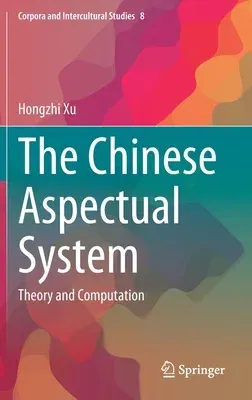Chapter 1. Introduction
1.1. What is Aspect 1.1.1. Definition of Aspect 1.1.2. Studies on
Chinese Aspectual Markers 1.1.3. Studies on Aspectual Classification
1.1.4. Situation Aspect vs. Viewpoint Aspect 1.2. The Goal of the Study
1.3. Methodology1.4. Thesis Organization
Chapter 2. Previous Studies2.1. Situation Aspect and Vendler's Classes
2.2. Aspectual Classification 2.2.1. Feature-Based Methodology 2.2.2.
The Conceptual Structure 2.2.3. The Generative Lexicon 2.2.4. MARVS 2.3.
Diagnostics for aspectual classification 2.4. Difficulties in Aspectual
Classification 2.4.1. Degree Achievements 2.4.2. More than Degree
Achievements 2.4.3. Achievement vs. Accomplishment 2.4.4. The term
'telicity' 2.4.5. Intention and Perception 2.5. Aspectual Studies on
Chinese 2.6. Summary
Chapter 3. Event Structure and Event Types3.1. Ontological Situation
Types 3.1.1. Representation of Ontological Situation Types 3.1.2.
Progressive is Stative 3.1.3. Primitives of Events 3.1.4. Theoretically
Existing Situation Types 3.2. Linguistic Events 3.2.1. Viewpoint Aspect
3.2.2. Linguistic Event: Combination of Situation and Viewpoint Aspect
3.2.3. What expresses the ontological situations and what to classify?
3.3. Where Is Telicity From? 3.3.1. Intentionality 3.3.2. Result 3.3.3.
Perception and Prediction 3.3.4. Context 3.3.5. Summary of Telicity 3.4.
Linguistic Event Types 3.4.1. Static State: ---- 3.4.2. Dynamic State:
3.4.3. Change of State: ==== 3.4.4. Semelfactive: 3.4.5. Accomplishment:
== 3.4.6. Instantaneous Accomplishment: == 3.5. Constructions and Their
Aspects 3.5.1 Resultative Verbal Complements (RVCs) 3.5.2. Resultative
DE construction 3.5.3. Serial Verb Constructions (SVCs) 3.5.4.
V+(ZHE/LE/GUO)+O+(LE) 3.5.5. BA construction 3.5.6. BEI construction
3.6. Summary
Chapter 4. Semantics of Aspectual Markers and Negators in Chinese4.1.
Introduction 4.2. Aspectual Operators 4.3. 了 LE 4.3.1. LE with static
state 4.3.2. LE with dynamic state 4.3.3. LE with accomplishment 4.3.4.
LE with achievement 4.3.5. The Two LEs: LE1 and LE2 4.3.6. LE is not a
tense marker 4.3.7. Non-Aspectual LE 4.4. 着 zhe0 'ZHE', 在 zai4 'ZAI'
and 正在 zheng4zai4 'ZAI' 4.4.1. The difference of 在 zai4 'ZAI' and
正在 zheng4zai4 'ZAI' 4.4.2. The Difference of Static State with and
without ZHE and their relation with Negators 4.4.3. The difference of
ZHE and LE in existential sentences 4.5. 过 guo4 'GUO' 4.5.1.
Grammaticality and World Knowledge 4.5.2. Time Frame of GUO 4.5.3. The
Truth Condition of GUO 4.6. Negations 4.6.1. 不 bu4 4.6.2. 没有 mei2you3
4.7. Summary
Chapter 5. Formal Representation of Aspect5.1. Introduction 5.1.1.
Second Order Logic 5.1.2. Predicates and Parameters 5.1.3. Class,
Instance and Subclass 5.1.4. Attributes, Functionalities and Habits
5.1.5. Instances of Situations 5.1.6. Multi-modal Predicates in Natural
Language 5.2. The Basic Predicates Related to Time 5.3. Representations
for O

